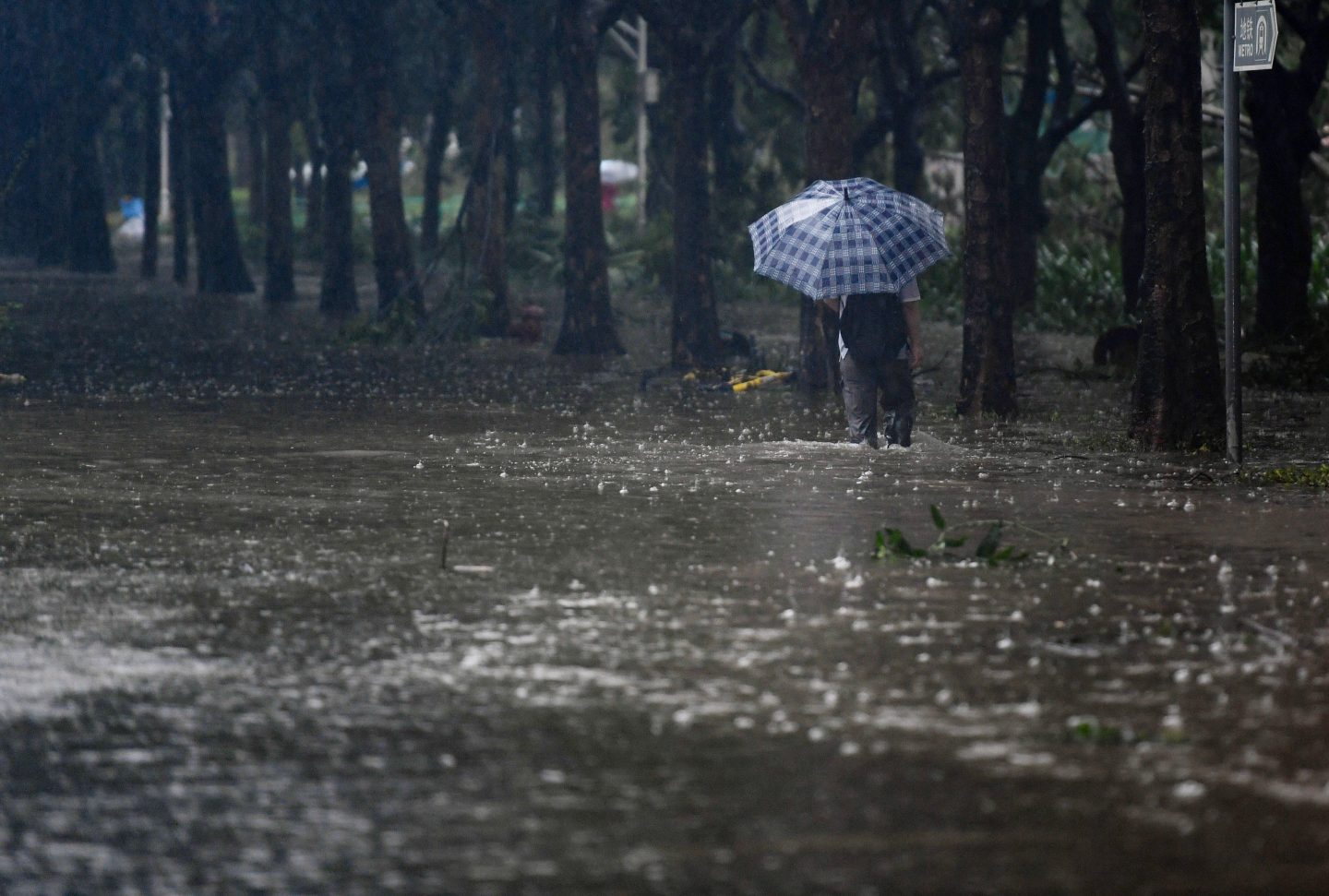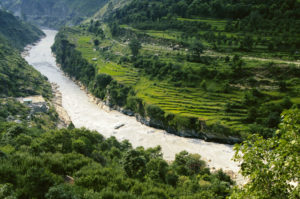In 2005, Hurricane Katrina struck the Mississippi delta in the state of Louisiana. The severe flooding that followed led to the death of 1,800 people. Over a million were displaced and the direct economic losses reached more than US$100 billion. One of the worst natural disasters in US history was made much worse by long-term destruction of the delta wetlands, which would otherwise have absorbed much of the seawater that surged into the city of New Orleans.
In response to the disaster, Congress authorised a $14 billion reconstruction of the New Orleans flood defences, including a levee system strong enough to withstand once-in-a-century floods.
But in May 2018, just 11 months after those levees were completed, the US Army Corps of Engineers warned that rising sea levels and subsidence in the soft ground meant they may only last for another four years. It later called for an additional $3.2 billion to reinforce the levees.
While acknowledging the importance of this work, some local environmental groups have argued that the levees will remain at risk regardless of their height. They cannot be the sole solution, they say.
Research is increasingly showing the promise of another approach: restoring wetlands to make coastal areas more robust and resilient to flooding. As we will see, China in particular could benefit greatly from this approach.
Natural coastal defences
As early as the 1970s, people were aware that Louisiana was losing over 100km2 of its coastal wetlands every year. Restoration schemes only started in the late 1990s, however, with the state government launching the Coast 2050 plan. This recommended spending $14 billion on the regeneration of coastal wetland ecosystems over the following 30 years. But due to a lack of funding and a succession of replacement schemes, Louisiana’s wetlands continued to decline. Meanwhile, federal funds for coastal protection were used to strengthen and maintain engineered flood defences such as levees, sea walls, breakwaters and riprap.
Can natural coastal defences compete with engineered solutions in the face of a threat like Hurricane Katrina? In 2011, a team lead by Rachel K Gittman of the University of North Carolina tried to answer that question by studying the damage done by another devastating hurricane, Irene. The worst-affected area was the Outer Banks, a long thin strip of islands stretching much of the way along the North Carolina coast. Many properties there were protected by bulkheads – sea walls typically concrete and about two metres high. Gittman found three quarters of these had been damaged by the hurricane. Meanwhile, the marshes that extend up to 40 metres into the sea had lost no sediment or elevation. Some of the marsh vegetation was damaged, but it had all grown back by the following year. A survey of 689 waterfront properties found that the 41% protected by bulkheads suffered 93% of the damage. Moreover, annual maintenance costs for bulkheads were four times those for the natural defences.
$2 billion
spent on restoring a salt marsh could prevent $18.2 billion in damage
More and more evidence like this is showing that “living coastlines” made up of salt marshes, mangrove forests, oyster reefs and shallow-water coral reefs are better able to resist storms and flooding. Oyster and coral reefs are natural breakwaters, with rough surfaces that absorb the power of waves, weakening floods and reducing coastal erosion. Meanwhile, vegetation in salt marshes and mangrove forests sap energy from storm surges. After a survey of damage caused by Hurricane Sandy in 12 eastern US states, scientists calculated that despite retaining only 10-40% of their natural wetlands, this was enough to reduce the economic damage of the hurricane by $625 million.
While restoring natural wetlands requires investment, it may be much better value for money than artificial defences. The six-metre-tall levees being built to protect properties in Louisiana cost $33,000 a metre, but research suggests they will only reduce losses from storms by a quarter of that amount, representing a return of just $1 for every $4 spent. Meanwhile, calculations show spending $1.3 billion on restoring an oyster reef could prevent $9.7 billion in damages. And spending $2 billion on restoring a salt marsh could prevent $18.2 billion in damage.
Restoration costs are coming down as techniques improve. Scientists have discovered that salt marsh vegetation grows three times faster when planted in clumps, and natural enemies of herbivorous crabs can be introduced to further aid growth. Restoration of oyster reefs also helps to protect the salt marshes.

Coral reefs are another effective natural flood defence, able to absorb 97% of wave energy, with relatively cheap restoration costs. On average, a metre of coral reef can be restored for $1,300, compared to $20,000 to build a metre of breakwater. In the US, coral reefs help avoid $1 billion in damages every year; in Mexico, Malaysia, Indonesia and the Philippines, the figure is over $400 million for each country. Some insurance companies are realising that restoring mangrove forests and coral reefs offers better value than building artificial defences. For example, Swiss Re and the Nature Conservancy have worked together on a Coastal Zone Management Trust in Yucatan, Mexico, where income from tourism is used to fund regular maintenance of reefs and to take out insurance on those reefs. That insurance then funds protection and restoration work on the reef if it is damaged by a storm.
Better late than never
While climate change has seen hurricanes in the North Atlantic intensify, things are even more worrying on the other side of the world. China is especially vulnerable to climate change – its sea levels have risen by more than the global average over the last 30 years, and typhoons that reach land have become stronger since the mid-1990s. China’s economic activity and populations are also concentrated on its coast, increasing the damage caused by storms. In 2018, Typhoon Mangkhut affected three million people across southern China, with 1.6 million evacuated, over 1,200 buildings destroyed, and 1.7 million hectares of crops damaged. Up to $120 billion of damage may have been caused across Asia as a whole.
In the wake of Mangkhut, experts warned that China would see more frequent and more powerful typhoons making landfall. It was estimated that 2020 would see 25-28 tropical cyclones form in the western Pacific and South China Sea, with six to eight making landfall in China. In August, three typhoons reached mainland China, with Zhejiang, Fujian and Guangdong provinces suffering damage worth 12.44 billion yuan (US$1.8 billion).

Since antiquity, those who live and work by the coast in China have built flood defences, and today levees and other coastal protections are key to disaster prevention efforts. But as experience in the US has shown, artificial defences have only limited effectiveness and require expensive annual repairs and maintenance.
Research shows that from the 1950s to the 2000s, China lost 53% of its temperate coastal ecosystems, 73% of its mangrove forests, and 80% of its coral reefs, mainly because of huge levels of development and land reclamation. As such, the country’s coastline has lost much of its capacity to resist increasingly intense storms.
Mangrove forest 150 metres wide can reduce the height of a storm surge by 80%, while a 30-metre belt of salt marsh vegetation can reduce wave energy 70%
But it is not yet too late. There is an ever-clearer awareness of the value of the ecological services provided by China’s coastal wetlands, and protection and restoration is now on the agenda for policymakers. In April 2017, President Xi said mangrove forests must be safeguarded while inspecting some in Guangxi. In July 2018, the State Council published a notice on better protection of coastal wetlands and tougher regulation of land reclamation projects. In June of this year, a 15-year plan for protecting and restoring key ecosystems was published – future work will focus on saving and regenerating coastal vegetation such as mangrove forests, seagrass meadows and coral reefs. Then, in August, the Ministry of Natural Resources and the State Forestry Administration published a detailed 2020-2025 plan for protecting and restoring mangrove forests.
The ministry’s National Marine Hazard Mitigation Service is leading development of a system to assess and categorise the protection offered by coastal wetlands. Trial results indicate that mangrove forests with a width of 150 metres can reduce the height of a storm surge by 80%, while a belt of salt marsh vegetation 30 metres wide can reduce wave energy by 70%, and a 100-metre-wide grassy marsh reduces their energy by 90% – proving how effective these wetlands are as barriers against the sea. In response to these findings, the ministry has led the drafting and release of a series of standards for the surveying, assessment, restoration and management of coastal ecosystems. While these standards are not binding, they are a positive step.
Given all these developments, it seems likely that the government will increase protection and restoration of coastal wetlands in the upcoming 14th Five Year Plan period (2021-2025).
Making use of coastal wetlands as a natural “green infrastructure” – working with nature rather than against it – to reduce threats facing humanity is, perhaps, a welcome return to rationality.








